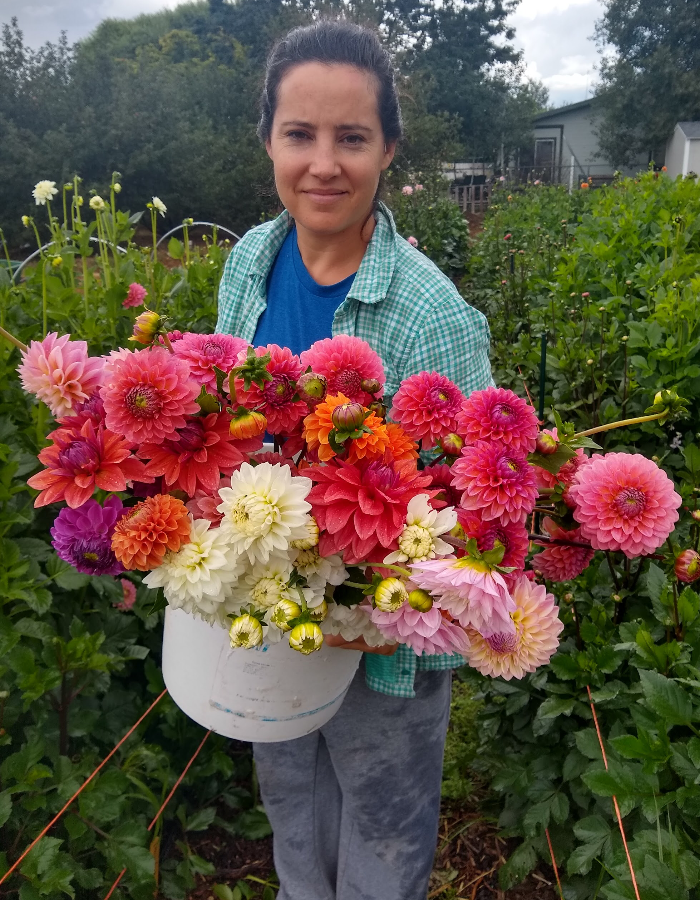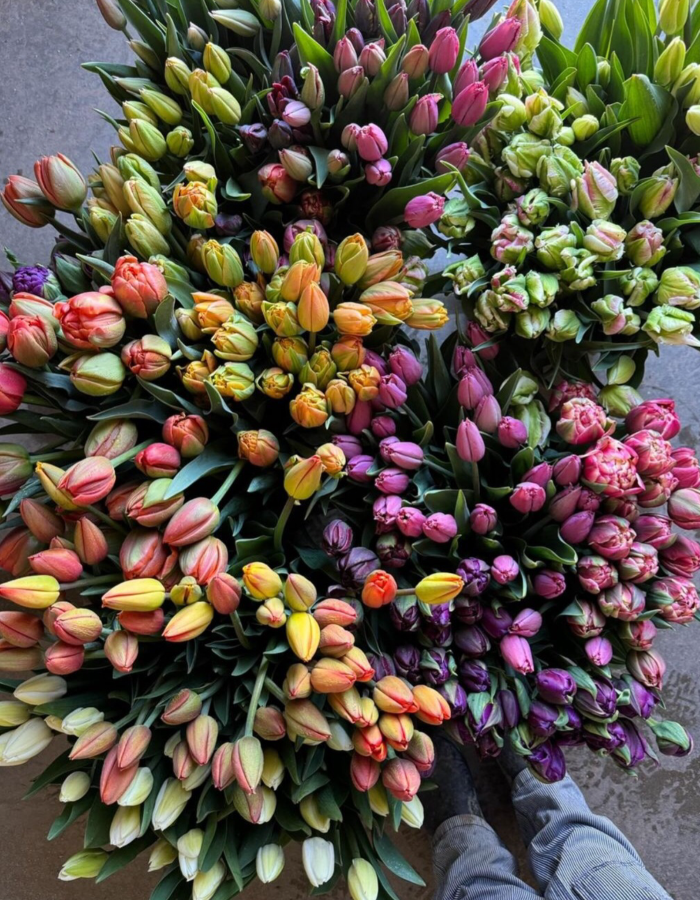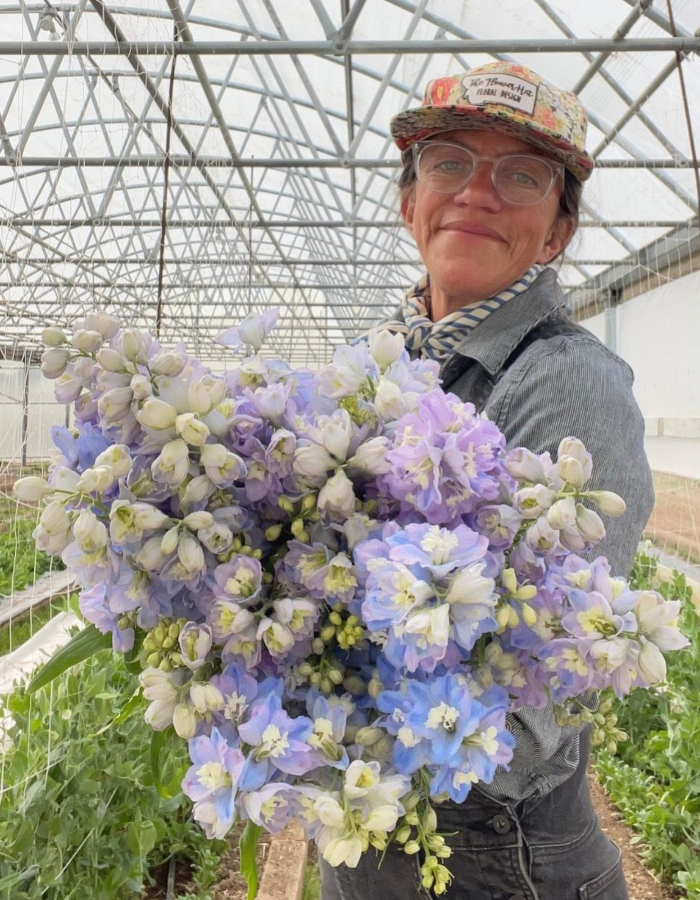By Camilla Sexton
When people think of Arizona, they generally think of saguaro wilderness, the oppressive heat, and the Grand Canyon. That doesn’t seem like an environment that would work well for agriculture. Yet even in Arizona’s extreme conditions, a budding agricultural crop of cut flowers is being grown on farms (and in backyards!) around the state.
 Back in the 60s and 70s, flower production was abundant in South Phoenix. Over the years, that land was developed and flower farming ended in Arizona. Most flowers in the industry began to be farmed in Central and South America, as they could be produced year round with little cost. Today, the majority of flowers you find in the grocery store and florists’ shops still come from Central and South America, although more flowers are coming from California when available.
Back in the 60s and 70s, flower production was abundant in South Phoenix. Over the years, that land was developed and flower farming ended in Arizona. Most flowers in the industry began to be farmed in Central and South America, as they could be produced year round with little cost. Today, the majority of flowers you find in the grocery store and florists’ shops still come from Central and South America, although more flowers are coming from California when available.
Most flowers travel from thousands of miles away — first harvested from a farm, then to a wholesaler, followed by a grocery store or florist, and then to you. By the time you get them, they’re not exactly fresh. Because of the time it takes for the flowers to get to your home, only a select few flower varieties are typically available to choose from. These flowers tend to have more chemicals sprayed on them to repel and kill insects and to keep them lasting long enough to get into your hands.
Do You Know What’s On Those Grocery Store Flowers?
Knowing what’s lurking on conventionally grown flowers, it’s disturbing to see them adorning various cakes and baked goods for décor. It’s also unnerving to see someone putting their face in a bouquet of flowers that has been sprayed with chemicals. Consider that the next time you purchase flowers from the grocery store or florist. Instead, you might consider purchasing local flowers, as they’re much more likely not to be sprayed with toxic chemicals.
 With more consumers choosing to buy local and to support sustainable practices, locally grown food and flowers are growing in popularity. In turn, locally produced products are becoming more widely available. Farms in Arizona have been focused largely on food, but more are starting to grow flowers because consumers are asking for them.
With more consumers choosing to buy local and to support sustainable practices, locally grown food and flowers are growing in popularity. In turn, locally produced products are becoming more widely available. Farms in Arizona have been focused largely on food, but more are starting to grow flowers because consumers are asking for them.
Flower Farms Across Arizona
In Arizona, we have flower farms and backyard flower growers all over the state today. Some of the larger farms are in Kingman (Rosebird Farm) and Paulden (Whipstone Farm). Smaller farming is happening from the north in Show Low and all the way south to Elgin.
 Arizona has such a diverse climate that in the late winter, flowers can be blooming in metro Phoenix and Tucson while northern Arizona is under snow. Once it gets super hot in Phoenix and Tucson, the farms in northern Arizona are growing the bulk of their crops. With such diverse climates in the state, flowers are blooming for cut flower production 10 months out of the year!
Arizona has such a diverse climate that in the late winter, flowers can be blooming in metro Phoenix and Tucson while northern Arizona is under snow. Once it gets super hot in Phoenix and Tucson, the farms in northern Arizona are growing the bulk of their crops. With such diverse climates in the state, flowers are blooming for cut flower production 10 months out of the year!
Many flower growers across the state sell their harvests at their local farmers markets, to their local florists, and offer their flowers in subscription services. In an effort to encourage florists to purchase more products from Arizona growers — and to get them into the hands of more consumers — flower farmers from across the state have come together to create a collective. Flowers from multiple farms across the state are being sold weekly to wholesale florists at Baseline Flowers, the site of the original South Phoenix flower growers. The Arizona Flower Collective is currently only selling wholesale to florists but hopes to be able to open up retail sales to the public in the future.
How can you get your hands on locally and sustainably grown flowers?
 Check out your local farmers market, ask your local florist to source from the Arizona Flower Collective, or reach out to a farmer and order directly from them. Here are a few farms in the Arizona Flower Collective you can contact:
Check out your local farmers market, ask your local florist to source from the Arizona Flower Collective, or reach out to a farmer and order directly from them. Here are a few farms in the Arizona Flower Collective you can contact:
- Anne E’s Garden Fresh, Scottsdale, @anne_es_garden_fresh on Instagram
- Flower to Table, Scottsdale, @shopflowertotable on Instagram
- Frontera Flowers, Bisbee, fronteraflowers.com, @fronteraflowers on Instagram
- The Potters Bench, San Tan Valley, thepottersbench.com, @the_potters_bench on Instagram
- Ruby Jewel Flowers, Show Low, rubyjewelflowers.com, @rubyjewelflowers on Instagram
Local, sustainably grown flowers are not like the flowers you get at a grocery store. They’re grown without harmful chemicals, support pollinators, and change organically with the seasons. New varieties come into bloom week by week and provide a wonderful experience and a healthier way to enjoy flowers.







Wow, Camilla! Thank you! Excellent article. Condensing the history & culture of flower farming in AZ isn’t easy but you did it. Thanks you for always being a generous collaborator over the years.